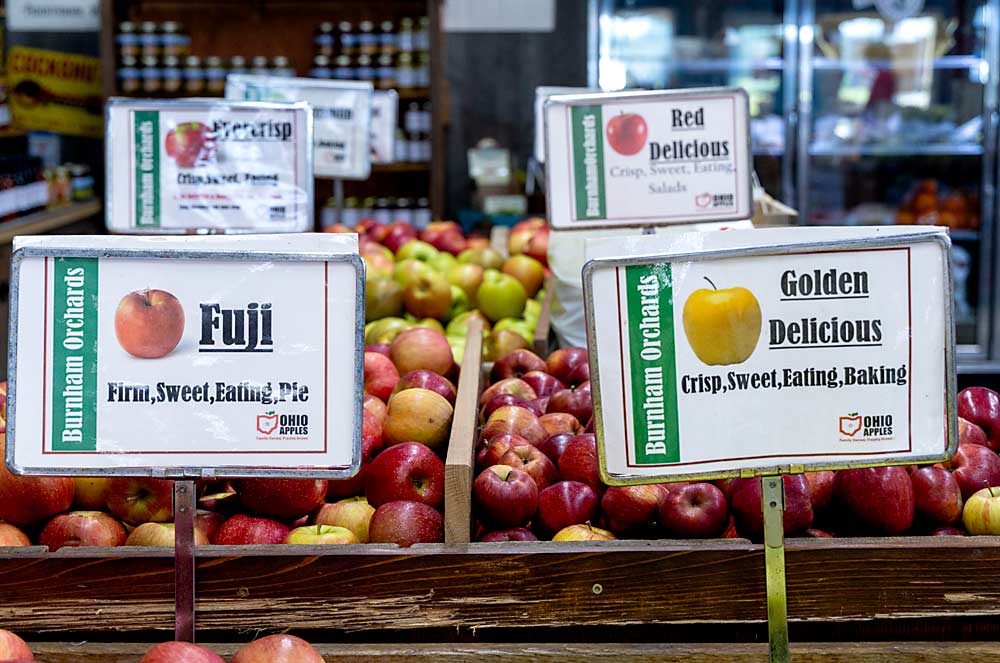Imagine standing in the middle of your farm, the sun rising over fields you’ve nurtured with care. As a farmer, you face a crucial decision: how to sell your produce most effectively.
Direct marketing and wholesale are two paths you can take. But which one truly aligns with your goals, increases your profits, and satisfies your customers? You’re not alone in this dilemma. Many farmers like you are weighing the benefits of direct marketing against the convenience of wholesale distribution.
Each option has its unique advantages and challenges. Direct marketing gives you more control and potential for higher profits, while wholesale offers broader reach and less hassle. This decision isn’t just about numbers; it’s about your future. It’s about choosing the path that best supports your farm’s growth and sustainability. As you read on, you’ll discover insights that could transform your business strategy, helping you make an informed choice that aligns with your passion and financial goals. Dive deeper to unlock the potential of your farm’s success.

Direct Marketing Benefits
Direct marketing offers farmers a unique opportunity to connect directly with consumers. By bypassing traditional distribution channels, farmers can retain more profits. This approach allows for greater control over pricing and product quality. Direct marketing also helps build strong relationships with customers, enhancing loyalty and trust.
Increased Profit Margins
Direct marketing reduces the need for intermediaries. Farmers keep a larger share of the sale. This boosts overall income and supports sustainable farming practices. Higher profit margins can lead to better investments in farm improvements.
Enhanced Customer Relationships
Direct interactions with consumers foster loyalty. Farmers can share their stories and farming practices. This personal touch builds trust and encourages repeat business. Customers appreciate knowing the source of their food.
Control Over Pricing
Farmers set their own prices with direct marketing. They are not bound by wholesale market fluctuations. This control helps stabilize income and ensures fair compensation for their efforts.
Flexibility In Product Offerings
Direct marketing allows farmers to test new products. They can adapt to consumer preferences quickly. This flexibility supports innovation and growth in their business.
Brand Development Opportunities
Farmers can develop their own brand identities. Direct marketing provides platforms to showcase unique products. Branding helps differentiate from competitors and attract more customers.
Reduced Waste
Direct sales often mean fresher produce. Farmers can better manage inventory. This leads to less spoilage and waste, benefiting both farmers and the environment.
Wholesale Advantages
Farmers often weigh the benefits of direct marketing against wholesale options. Selling wholesale offers predictable income and less marketing effort. Direct marketing can bring higher profits but requires more time and customer interaction. Each method has its own set of advantages for farmers.
When contemplating the best path for your farm’s produce, understanding the advantages of wholesale can be a game-changer. Wholesale marketing offers a reliable and often less stressful route for getting your products to consumers. It’s important to weigh these benefits to make an informed decision for your farm’s future.Consistent Demand
Selling wholesale can provide a consistent demand for your products. Wholesale buyers, such as supermarkets and restaurants, often need regular supplies. This means you can plan your production with a clear understanding of how much will be sold.Less Marketing Effort
Direct marketing requires you to invest time and effort into promoting your products. In contrast, wholesale buyers handle their own marketing. This leaves you more time to focus on improving and expanding your farm operations.Stable Income
With wholesale agreements, you’re more likely to have a stable income. Contracts with buyers often outline predictable payments. This can provide financial security and help in planning for long-term investments.Cost-effective Operations
Wholesale often involves selling in bulk, which can reduce costs on packaging and transportation. You can save on expenses, increasing your overall profit margin. This efficiency can be particularly beneficial for small to medium-sized farms.Building Strong Relationships
Working with wholesale buyers allows you to build strong business relationships. These connections can lead to more opportunities and collaborations. A loyal customer base can be invaluable for growing your business.Focus On Quality
When you’re not constantly marketing your products, you can focus on what you do best: farming. Devote your time to improving the quality of your produce. High-quality products can lead to long-term partnerships with wholesale buyers. Have you considered the stability and simplicity that wholesale might offer your farm? It could be the key to advancing your agricultural business without the constant hustle of direct sales.Challenges In Direct Marketing
Direct marketing offers farmers control over prices and customer relationships. Yet, it brings its own set of challenges. Farmers must tackle these hurdles to succeed. Understanding these challenges can aid in making informed decisions.
High Initial Costs
Starting direct marketing requires investment. Farmers need funds for packaging, transportation, and promotion. These costs can be steep, especially for small farms. Budgeting is crucial to manage expenses wisely.
Time Management
Direct marketing demands time. Farmers have to balance farm work with sales. This includes attending markets, handling orders, and customer service. Time management skills are essential to juggle these tasks effectively.
Building Customer Relationships
Connecting with customers takes effort. Farmers must engage with clients regularly. This involves sharing farm stories, product benefits, and updates. Building trust can lead to repeat business and loyalty.
Market Competition
The market is competitive. Farmers face competition from other producers. Differentiating products is key to standing out. Unique offerings can attract attention and increase sales.
Marketing And Promotion Skills
Marketing is crucial. Farmers need to learn promotion strategies. This includes social media, branding, and advertising. Effective marketing can boost visibility and reach new audiences.

Wholesale Obstacles
Wholesale marketing presents unique challenges for farmers. It often involves selling large quantities of produce to retailers or distributors. While it can be a steady source of income, the obstacles can be significant.
High Competition
Farmers face tough competition in wholesale markets. Many producers offer similar goods. This makes it hard to stand out. As a result, prices can be driven down. Farmers may receive lower profits.
Price Fluctuations
Wholesale prices can change rapidly. Factors like weather and demand affect prices. Farmers must adapt quickly. Predicting these changes is challenging. It can lead to financial uncertainty.
Quality Standards
Wholesale buyers often have strict quality standards. They demand uniform products. Meeting these standards can be difficult. Farmers may need to invest in better equipment. This can increase production costs.
Limited Control
Farmers have less control in wholesale markets. They rely on middlemen to sell their products. These intermediaries set prices and negotiate deals. This limits a farmer’s ability to influence market outcomes.
Logistical Challenges
Transporting large quantities of produce is complicated. Farmers need reliable logistics systems. Delays can affect freshness and quality. Efficient transport is crucial for success in wholesale markets.

Conclusion
Farmers face important choices. Direct marketing brings them closer to customers. It offers better control over sales and pricing. Wholesale means selling large quantities at once. It can simplify logistics but might lower profit margins. Each method has pros and cons.
Farmers must weigh their options carefully. Consider financial goals. Think about available resources. Evaluate customer relationships. The right choice depends on individual priorities. Both methods can succeed with proper planning. Farmers should explore what fits best for their farm. Balance is key.
Make informed decisions for future growth and sustainability.

